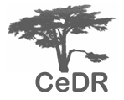


Deaf newspapers: A cornerstone of the deaf community
Martin Atherton, International Centre for Signed Languages and Deaf Studies, University of Central Lancashire
Abstract
Deaf newspapers have provided an intimate but largely ignored record of the lives and experiences of British deaf people since at least the middle of the nineteenth century. As a research resource, deaf print media is virtually without parallel in offering insights into the views and opinions of the British deaf community and in reporting both changes and consistency in various aspects of deaf life. However, papers such as Deaf Mute, British Deaf Times and the hugely important British Deaf News have played a much more pivotal role within the deaf community than merely recording its events and happenings. This paper will argue that deaf newspapers have served a vital part in the maintenance of the deaf community itself, by providing a conduit through which the geographical dispersed members of the community were able to keep in touch each other and to share in the experiences and perspectives of their contemporaries from across Britain. In doing so, papers such as BDN helped to disseminate information and ideas to a group of people who had no access to other forms of mass communication. At the same time, deaf newspapers helped foster feelings of community cohesion and membership amongst deaf people who might not otherwise have any direct contact with people from similar backgrounds who lived outside their immediate location. In doing so, deaf print media served as what Benedict Anderson terms 'cultural product', placing deaf newspapers at the very heart of the process by which the concept of the 'Deaf Nation' has emerged in recent years. Based on an extensive longitudinal analysis of British Deaf News during the post-war period, this paper will provide a brief historical overview of deaf print media in Britain and will use examples drawn from the paper to illustrate the variety of news and information contained in the paper. In addition, the ways in which this exchange of information served to bring members into what was in many respects an 'imagined community' rather than an easily definable and recognisable one will be discussed. By doing so, it is hoped that the status of British Deaf News and its predecessors as vital and necessary factors in developing and continuing ideas of community based on shared experiences of deafness will be demonstrated.